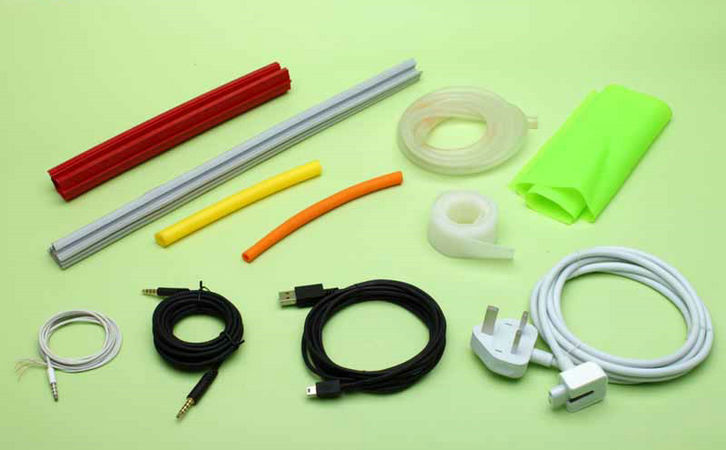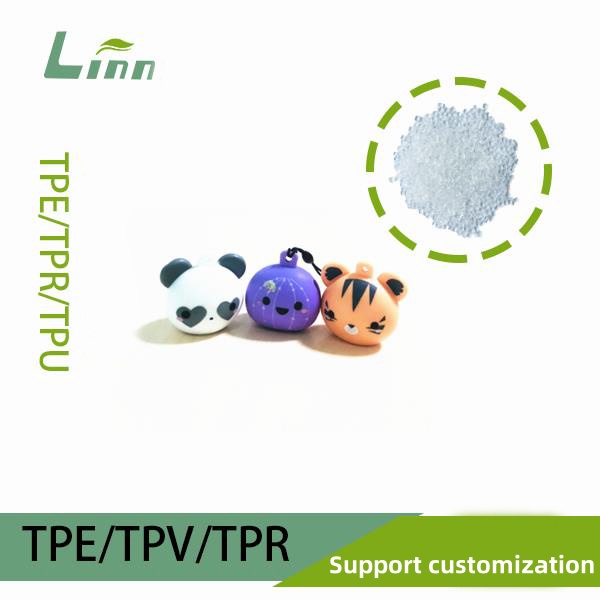Having spent over a decade in the rubber and plastics industry, I’ve gained a fair amount of hands-on experience with TPR (Thermoplastic Rubber) testing and performance evaluation. One question I often hear is about how long it takes to test TPR hardness and tensile strength. People want to know: How much time does testing require? Can results come faster? Today, I’ll share my insights in a straightforward way, drawing from real-world experience to walk you through the testing process, timelines, and factors that affect them, hoping to clear up any confusion and save you some hassle.

Why Test TPR Hardness and Tensile Strength?
Let’s start with why these tests matter. TPR blends rubber-like elasticity with plastic’s ease of processing, making it a go-to for shoe soles, seals, toys, and more. Hardness determines how soft or firm the material is, directly impacting user experience—like whether a shoe sole feels comfortable or a seal fits snugly. Tensile strength (including tensile strength and elongation at break) shows how tough and durable the material is, indicating whether it can withstand stretching or stress without tearing.
I recall a case where a client making TPR yoga mats reached out because their product was tearing during use. Testing revealed low tensile strength and poor elongation at break. We tweaked the formulation and refined the testing process to fix the issue. That experience underscored how critical hardness and tensile tests are for ensuring product quality.

The Basic Process for TPR Hardness and Tensile Testing
To answer “how long does testing take,” we need to break down the process. Having run countless TPR tests in factories and labs, I can summarize the typical steps:
Sample Preparation: Shape TPR material into standard test specimens (e.g., dumbbell-shaped samples for tensile tests or blocks for hardness tests) to meet specific size and surface requirements.
Sample Conditioning: Place samples in a standard environment (typically 23°C ± 2°C, 50% ± 5% relative humidity) to stabilize and eliminate residual stresses from processing.
Equipment Calibration: Ensure the hardness tester (like a Shore durometer) and tensile testing machine are functioning and calibrated accurately.
Hardness Testing: Use a durometer to measure the sample’s hardness, typically Shore A or Shore D.
Tensile Testing: Stretch the sample in a tensile testing machine until it breaks, recording tensile strength, elongation at break, and other data.
Data Analysis and Recording: Compile results and check if they meet standards or client specifications.
Each step contributes to the overall timeline, with sample conditioning often being the biggest time sink.
How Long Do Hardness and Tensile Tests Take?
People often want a precise timeline, like “How many hours does it take?” But the truth is, the time for TPR hardness and tensile testing depends on the testing standard, sample condition, and purpose. Let’s dive into the details.
1. Hardness Testing Time
Hardness testing is relatively quick, using a Shore durometer to press into the sample’s surface, with a single test taking just a few seconds. However, several factors can extend the process:
Sample Conditioning: Per standards like ASTM D2240 or ISO 868, samples need conditioning in a standard environment (23°C, 50% humidity) for at least 16 hours to ensure stable properties. Freshly processed samples may require 24-48 hours to release internal stresses.
Repeated Tests: For accuracy, each sample is typically tested 3-5 times, averaging the results. With intervals between tests and time for switching samples or recording data, a single sample’s hardness test might take 5-10 minutes.
Multiple Samples: Testing multiple samples (e.g., different TPR formulations) multiplies the time. For 10 samples, expect 1-2 hours (excluding conditioning).
Once, I tested TPR shoe sole hardness for a client with five batches, each with three samples. Conditioning took 24 hours, and the actual testing plus recording took about 1.5 hours, totaling just over a day.

2. Tensile Testing Time
Tensile testing is more complex, as it involves stretching samples to their breaking point, requiring more equipment handling and data collection. Here’s the breakdown:
Sample Conditioning: Like hardness testing, tensile samples need 16-48 hours of conditioning per standards like ASTM D412 or ISO 37. Freshly molded TPR might need longer.
Equipment Setup: Tensile testing machines require preheating and calibration, typically taking 10-20 minutes.
Testing Process: A single tensile test (stretching to break) takes 1-3 minutes, depending on the stretching speed (commonly 500 mm/min). Including sample setup and removal, each test takes about 5 minutes.
Repeated Tests: Each sample is tested 3-5 times for reliable data, so one sample’s tensile test might take 15-25 minutes.
Multiple Samples: For multiple samples, time adds up. Testing 10 samples could take 2-4 hours (excluding conditioning).
For example, a client making TPR seals needed tensile strength and elongation data. For 10 samples, conditioning took 24 hours, testing and data compilation took 3 hours, totaling about 1.5 days.
3. Total Time Reference
Overall, sample conditioning dominates the timeline for both tests. Here’s a reference table based on my years of testing experience:
|
Test Type |
Conditioning Time |
Actual Testing Time |
Total Time (Single Batch) |
|---|---|---|---|
|
Hardness Testing |
16-48 Hours |
5-10 Minutes/Sample |
16-48 Hours + 0.5-2 Hours |
|
Tensile Testing |
16-48 Hours |
15-25 Minutes/Sample |
16-48 Hours + 2-4 Hours |
|
Hardness + Tensile Testing |
16-48 Hours |
20-35 Minutes/Sample |
16-48 Hours + 3-5 Hours |
This table assumes 5-10 samples. More samples or additional tests (e.g., post-aging performance) will extend the timeline.
Factors Affecting Testing Time
Beyond the standard process, several factors influence how long testing takes. These are some “pitfalls” I’ve learned to navigate over the years:
1. Different Testing Standards
Standards vary in conditioning time and test conditions. For example:
ASTM D2240 (Hardness) requires samples to be at least 6 mm thick and conditioned for 16 hours.
ISO 37 (Tensile) specifies dumbbell-shaped samples, with conditioning sometimes extending to 48 hours.
Custom Client Standards: Some clients demand non-standard conditions, like testing at 50°C, which adds time for equipment setup.
I once had a client request hardness testing at 50°C, which added 2 hours for equipment preheating and environmental stabilization.

2. Sample Condition
Freshly Processed Samples: Newly molded or extruded TPR samples have high internal stresses, often requiring 48 hours or more for conditioning.
Aged Samples: Testing post-aging TPR (e.g., after UV exposure) may involve additional aging experiments, extending the timeline by days.
Sample Quantity: More samples mean longer testing times. Large-scale quality checks could take days.
2. Sample Condition
Freshly Processed Samples: Newly molded or extruded TPR samples have high internal stresses, often requiring 48 hours or more for conditioning.
Aged Samples: Testing TPR after aging (e.g., post-UV exposure) may require additional aging experiments, adding days to the timeline.
Sample Quantity: More samples mean longer testing times. Large-scale quality checks could take days.
3. Equipment Efficiency
Lab equipment performance directly impacts speed. For instance, old manual durometers require manual data recording, slowing things down, while modern automated tensile machines can test continuously. I’ve seen small factories using manual durometers take 2 hours for 10 samples, while automated equipment cut that to 30 minutes.
4. Testing Purpose
R&D Phase: Testing multiple formulations or conditions can take days or even a week.
Quality Control: Pre-shipment quick checks might wrap up in 1-2 days.
Failure Analysis: Investigating issues like product tearing may require extra aging tests or microscopic analysis, extending the timeline.

How to Shorten Testing Time?
If the testing timeline feels too long, here are some practical tricks I’ve used to speed things up:
1. Prepare Samples in Advance
During production, make samples to standard dimensions, like dumbbell shapes for tensile tests or 6 mm thick blocks for hardness tests. This cuts down on later cutting or reshaping. I once helped a client redesign their sample mold, saving 2 hours of prep time.
2. Optimize Conditioning Environment
Use a climate-controlled chamber (23°C, 50% humidity) to meet standard conditioning requirements efficiently, often in just 16 hours. Without this, you might wait longer for samples to stabilize.
3. Use High-Efficiency Equipment
Invest in an automated durometer or multifunctional tensile tester to boost efficiency. For example, an automated durometer can cut single-test time from 10 seconds to 3 seconds.
4. Parallel Testing
Run hardness and tensile tests simultaneously to overlap conditioning time. I often test one batch while another is conditioning, boosting efficiency by about 30%.
5. Clarify Testing Needs
Before starting, confirm with clients or your team whether you need just hardness, tensile, or both. This avoids redundant tests and saves time.
Real-World Case Study
Here’s a case that stuck with me. A client making TPR toys for export to Europe needed hardness and tensile test reports within 3 days. The samples were freshly molded, with high internal stresses, requiring 48 hours of conditioning per standards.
We optimized the process: we used a climate chamber to cut conditioning to 24 hours, ran two tensile machines in parallel to reduce 10-sample Tensile Testing from 4 hours to 2, and used an automated durometer for hardness, finishing in 1 hour. We completed testing and reporting in 2.5 days, meeting the client’s deadline and passing certification. This taught me that smart planning and efficient equipment can significantly cut testing time.
Common Misconceptions and Tips
From working with clients, I’ve noticed some misunderstandings about TPR testing. Here are a few to avoid:
Myth 1: Testing Gives Instant Results
Many assume testing is as quick as weighing something. But conditioning is non-negotiable for accurate results. Plan ahead to account for it.
Myth 2: All TPR Tests Take the Same Time
Different formulations and applications have unique requirements. For example, shoe sole TPR might only need Shore A hardness, while seals may require precise tensile tests. Clarify standards upfront.
Myth 3: Speed Trumps Data Quality
Some rush conditioning or skip repeat tests to save time, but this risks inaccurate data. Always test at least 3 times and average the results for reliability.

Final Thoughts
The time to test TPR hardness and tensile strength hinges on sample conditioning, typically 16-48 hours, plus 1-5 hours for actual testing, totaling 1-2 days. More samples or complex requirements can extend this. As someone in the industry, I know testing time impacts production and delivery, but accuracy and reliability are non-negotiable. I hope this guide helps you plan your testing process effectively, balancing speed and quality.
If you have specific testing needs or run into issues, feel free to share, and I’ll do my best to guide you!
Related Q&A
1. What equipment is needed for TPR hardness and tensile testing?
Hardness testing requires a Shore durometer (A or D type), and tensile testing needs a universal tensile testing machine. Choose high-precision equipment and calibrate regularly.
2. Why does TPR testing require such long conditioning?
Conditioning stabilizes samples, eliminating processing stresses for accurate results. Standard conditions (23°C, 50% humidity) typically take 16-48 hours.
3. Can I skip conditioning and test right away?
Not recommended. Unconditioned samples may have internal stresses, leading to high hardness or inaccurate tensile data, compromising quality assessments.
4. How do I know if TPR hardness and tensile results are acceptable?
Compare results to product standards or client specs, e.g., shoe soles typically need 50-70 Shore A hardness and 5-10 MPa tensile strength.
5. Is TPR testing expensive?
Costs depend on sample volume and test complexity. A single hardness and tensile test might cost a few hundred to a thousand dollars. Efficient equipment and streamlined processes can reduce expenses.





